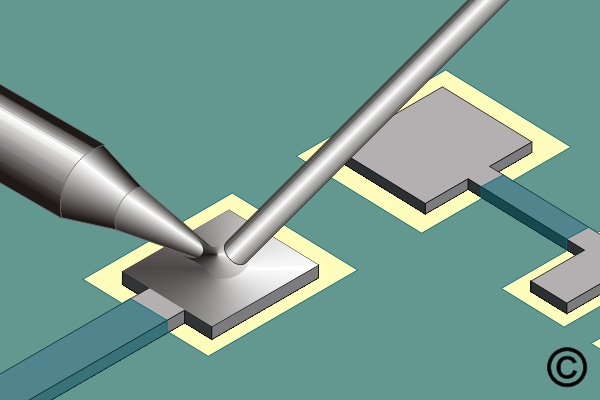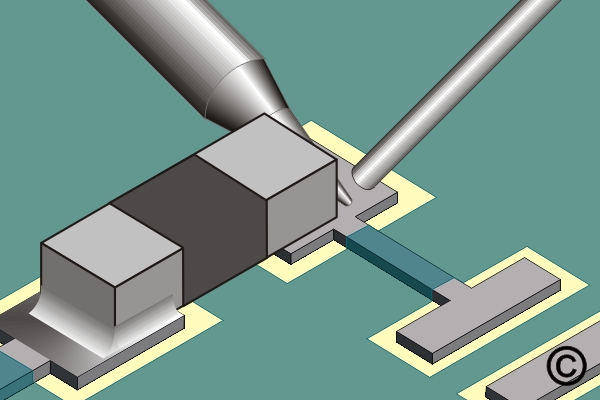|
Outline
This procedure covers the general guidelines for soldering surface mount chip components. The following surface mount chip components are covered by this procedure. While all of these components are different, the techniques for soldering are relatively similar
|
|||||||||||||||||||||||||||
|
Procedure
Procedure
|
|||||||||||||||||||||||||||
Images and Figures
Soldering Surface Mount Chip Components, Point To Point Method

Figure 1. Prefill one pad with solder.

Figure 2. Place the soldering iron tip at the junction between the prefilled pad and component lead.

Figure 3. Solder the other opposite side of the component.
|
|||||||||||||||||||||||||||
7.3.1 Soldering Surface Mount Chip Components, Point To Point Method
Procedure covers soldering of surface mount chip components on circuit board assemblies using a point to point soldering method.
Minimum Skill Level: Intermediate
Conformance Level: High
REQUEST FOR QUOTE GUIDES INDEX

Soldering Surface Mount Chip Components, Point To Point Method

Prefill one pad with solder.

Place the soldering iron tip at the junction between the prefilled pad and component lead.

Solder the other opposite side of the component.

Do you need help with surface mount and through-hole component rework or salvage?
LEARN MORE
SLIDESHOW STARTING
❮
❯





